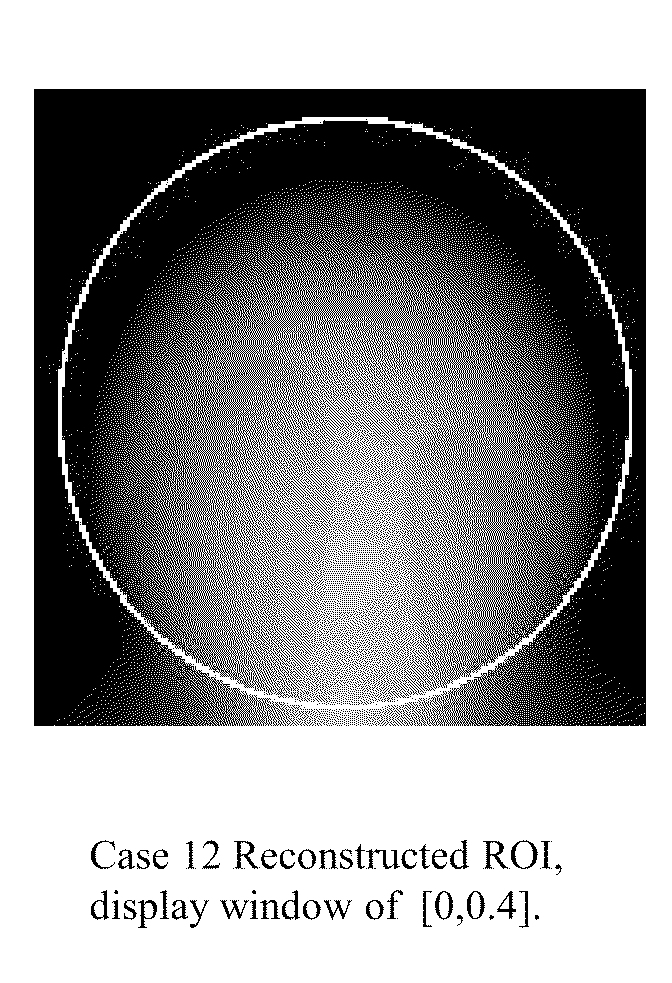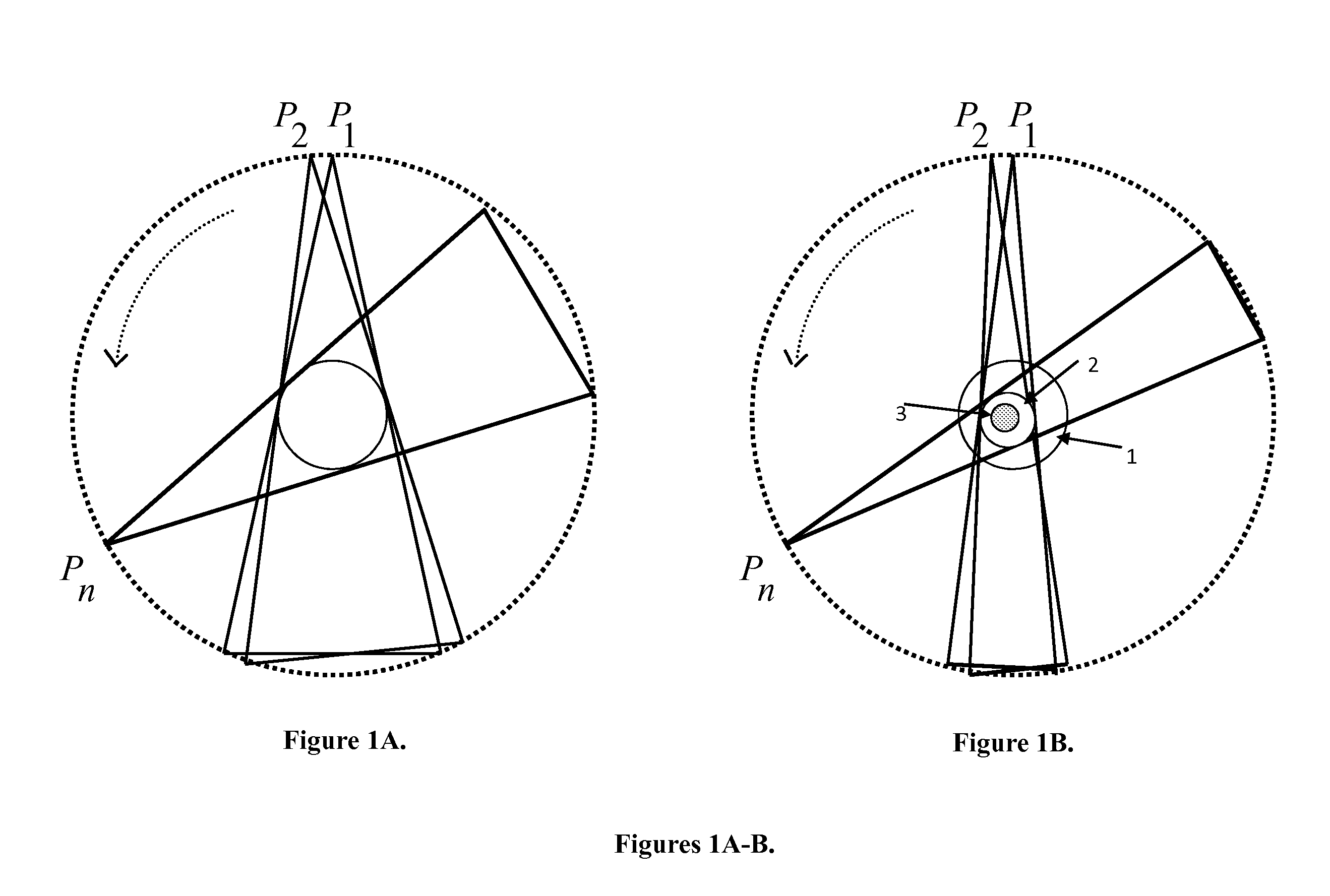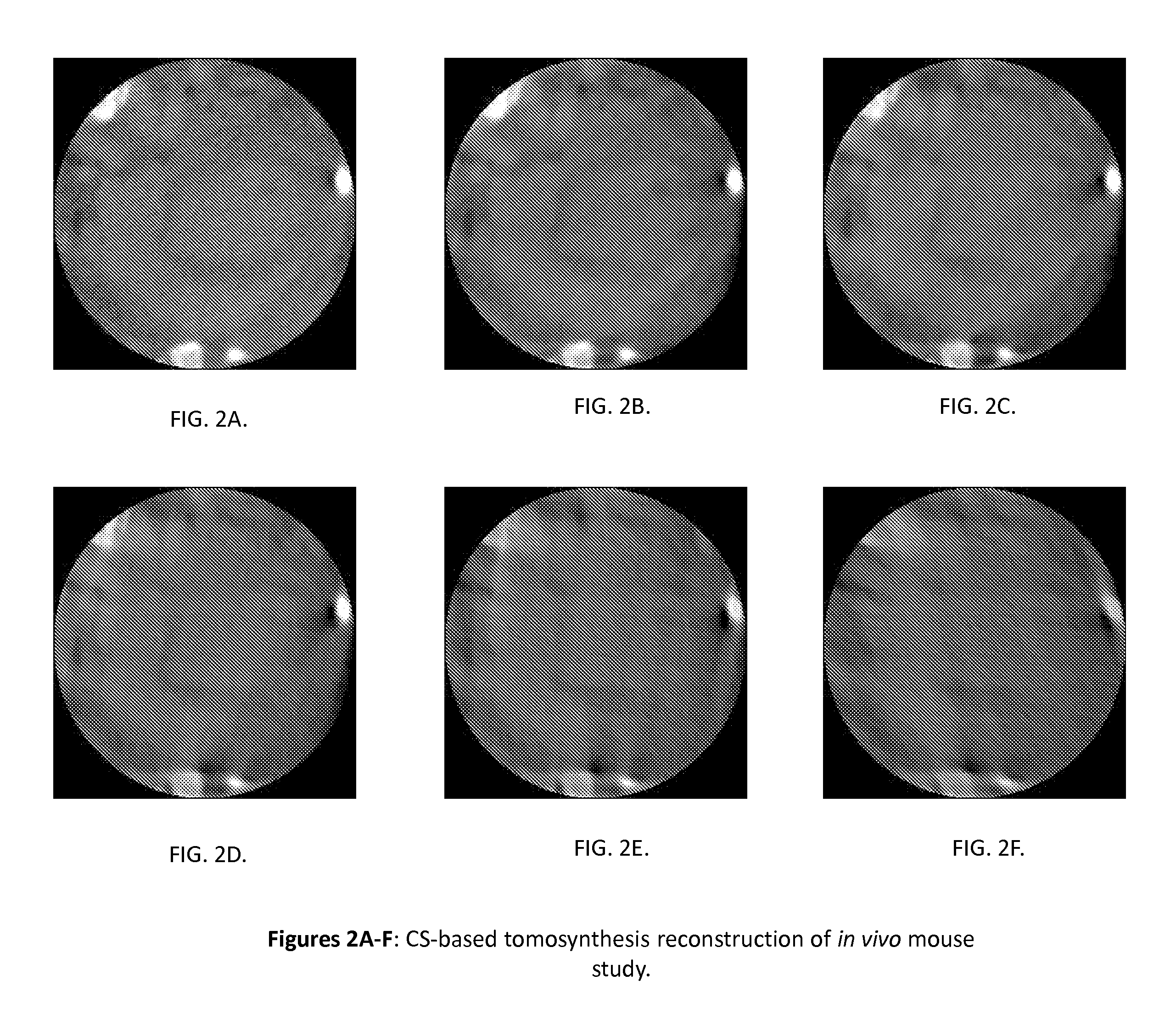Tomography-Based and MRI-Based Imaging Systems
a technology of imaging system and tomography, applied in the field of medical imaging, can solve the problems of image artifacts in existing interior tomography reconstruction algorithms, drop in image intensity, etc., and achieve the effects of improving temporal, spatial and contrast resolution, reducing examination time, and improving image quality
- Summary
- Abstract
- Description
- Claims
- Application Information
AI Technical Summary
Benefits of technology
Problems solved by technology
Method used
Image
Examples
Embodiment Construction
. Ultra-Fast Tomography. For a general CT-scan of the heart and the coronary arteries, a field of view (FOV) of ˜15 cm in diameter is preferred (apart from some very special cases where e.g. only the middle part of the right coronary artery would be of interest) and can be achieved using multi-source interior tomography by utilizing a limited number of sources to increase the ROI coverage and scanning the source-detector chains in a circular, saddle-curve or another trajectory to avoid under-sampling, cross-scattering, and other issues. In the case of 2N+1 sources, the radius r of the field of view (FOV) can be maximized by arranging the source-detector pairs equi-angularly to reach:
r=Rsin(π4N+2),(3)
[0438]where R is the radius of the scanning circle.
[0439]According to Eq. (3), the radius of FOV is decreased as the number of sources is increased. Specifically, we can cover an FOV of 16.2 cm or 13.4 cm in diameter with 11-source or 13-source interior tomography architectures respectiv...
PUM
 Login to View More
Login to View More Abstract
Description
Claims
Application Information
 Login to View More
Login to View More - R&D
- Intellectual Property
- Life Sciences
- Materials
- Tech Scout
- Unparalleled Data Quality
- Higher Quality Content
- 60% Fewer Hallucinations
Browse by: Latest US Patents, China's latest patents, Technical Efficacy Thesaurus, Application Domain, Technology Topic, Popular Technical Reports.
© 2025 PatSnap. All rights reserved.Legal|Privacy policy|Modern Slavery Act Transparency Statement|Sitemap|About US| Contact US: help@patsnap.com



